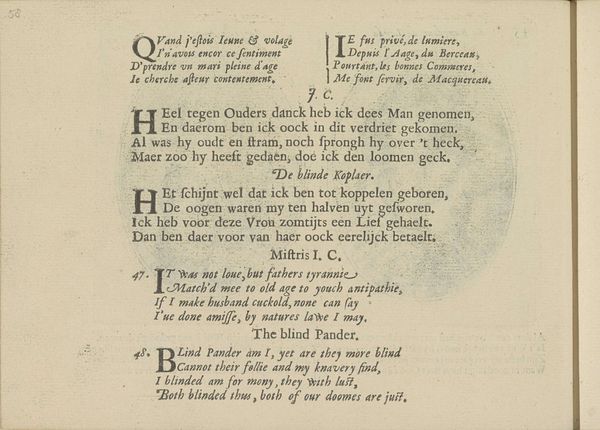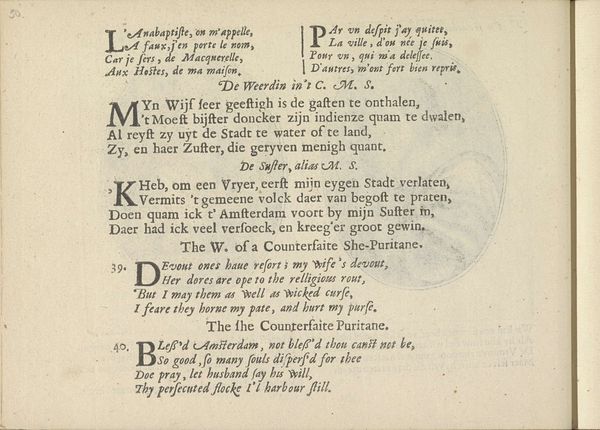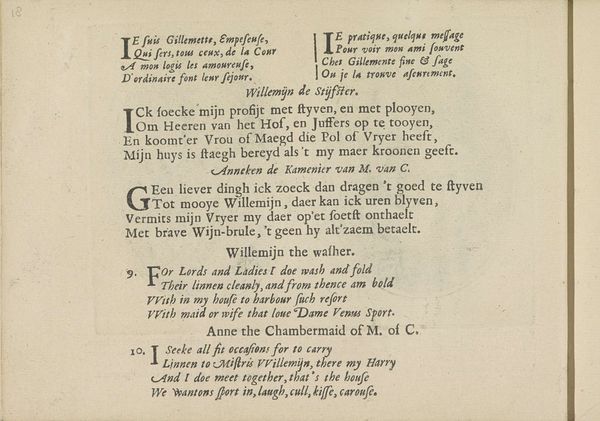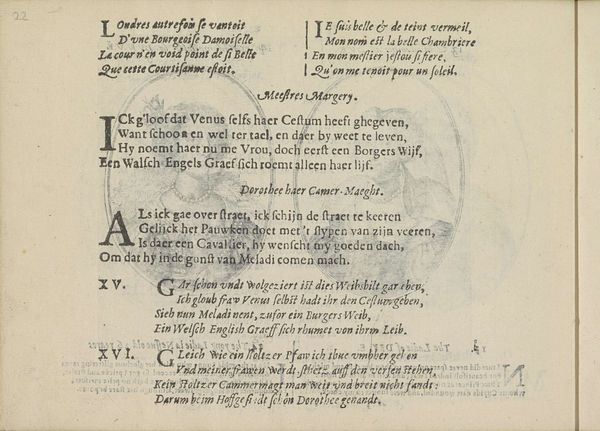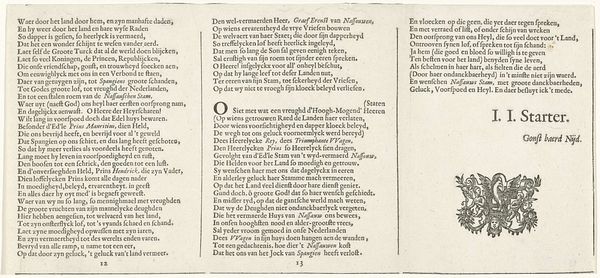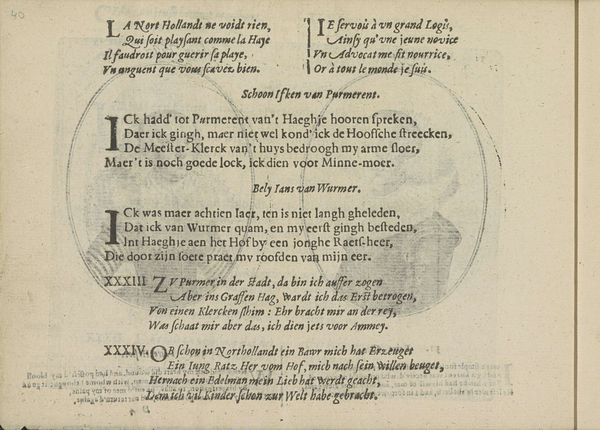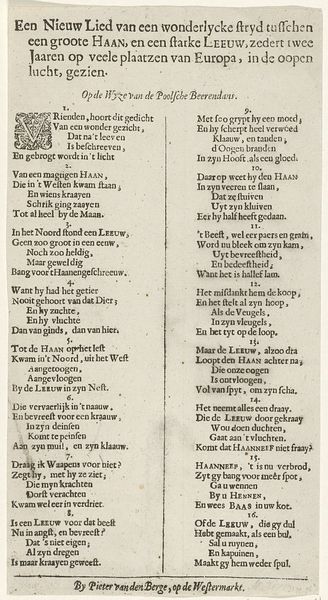
Kwatrijnen bij voorstellingen van een officiersvrouw en een houtdrager 1641
0:00
0:00
print, textile, engraving
# print
#
textile
#
engraving
Dimensions: height 140 mm, width 190 mm
Copyright: Rijks Museum: Open Domain
This print of text, made by Crispijn van de Passe the Younger, dates to the early 17th century, a time of considerable social change in the Dutch Republic. It presents us with a series of contrasting figures: a courtier's wife and a wood carrier, alongside verses in Dutch, French and English. The juxtaposition isn't accidental. It gives us a window into the complex social hierarchy of the time, where status and labor were sharply defined. Consider the context: the Dutch Republic was a rising economic power, but traditional class structures still held sway. The verses offer insights into the lives and attitudes of different social groups. By presenting these figures side-by-side, the print subtly comments on the social structures of its time. To understand this print fully, we need to delve into the social and economic history of the Dutch Republic. Contemporary literature, account books, and records of civic life would all shed light on its meaning. Art history is always contingent on social and institutional context.
Comments
No comments
Be the first to comment and join the conversation on the ultimate creative platform.
